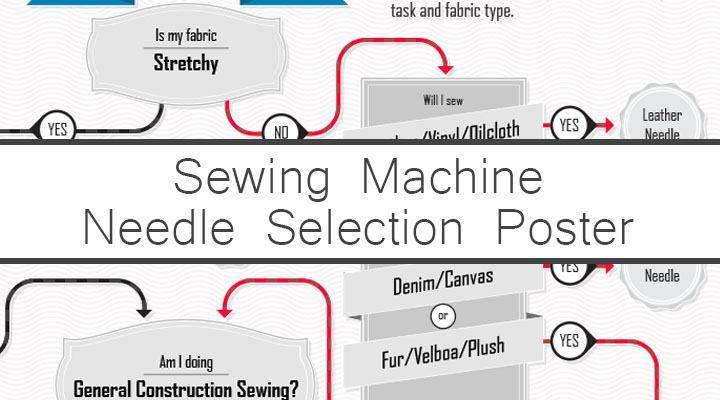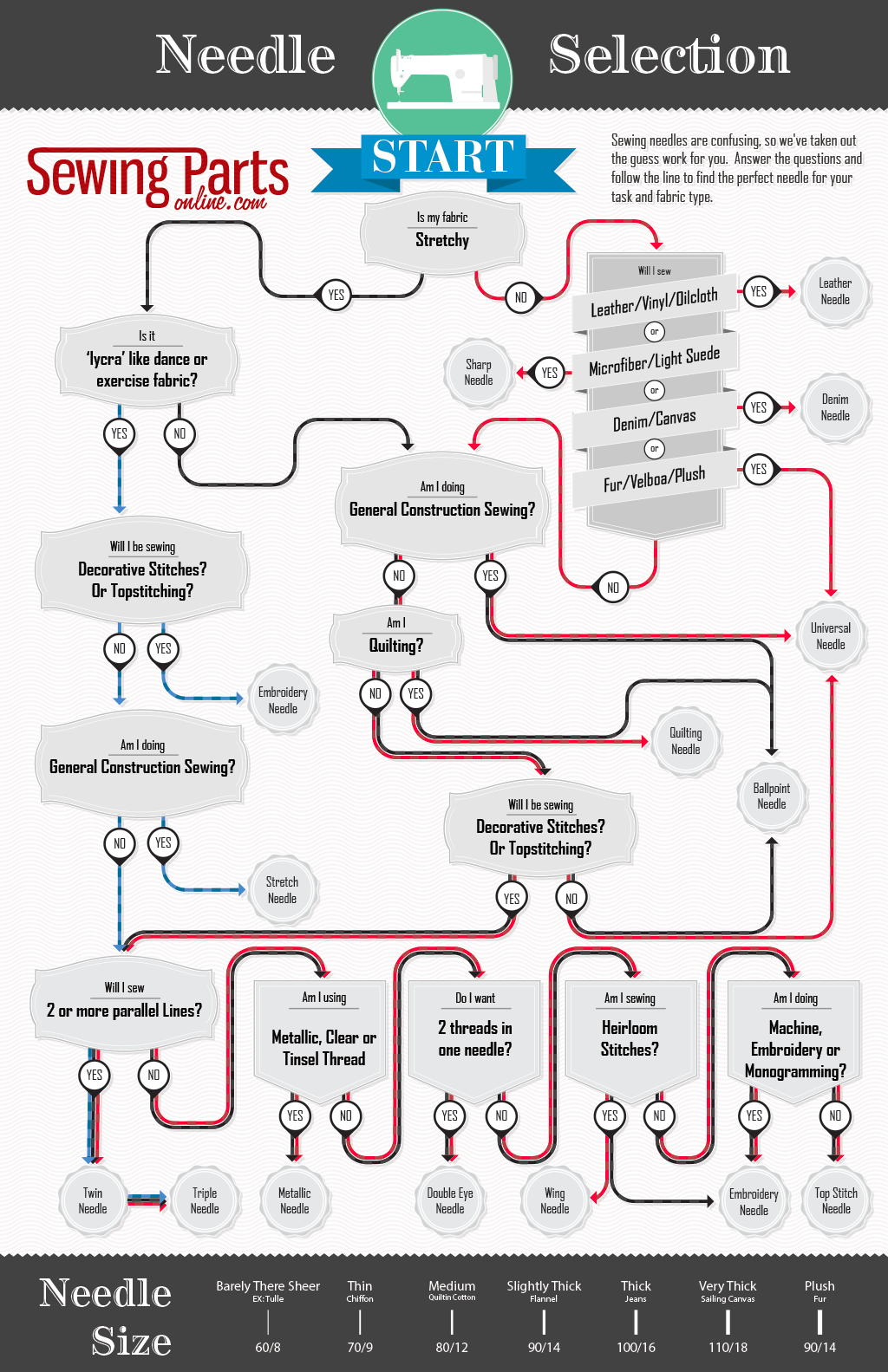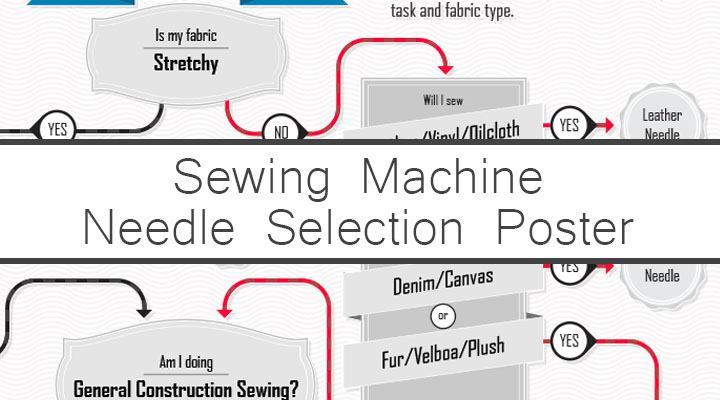
When I got my very first sewing machine, I didn't even know needles were removable, let alone that there were so many options available. I thought you used the same needle for every project - forever.
Understanding all the different needles available is hard, even for an experienced sewist. And if you're just starting out? Impossible.
The needle you use is like a painter's brush and your thread is the paint. Having the right tool matters! It takes a deal of critical thinking to determine which needle type and size to use for an individual project. But, as a busy woman once said, "Ain't nobody got time for that."
So we did it for you.
We hunted through libraries, magazines, websites, books, and experimented ourselves for months to learn (and relearn) everything about needles. We discovered that it's one thing to have the correct needle for the fabric type and weight, but what about the task? I'm not going to use an Universal Needle to topstitch decorative thread on cotton fabric. Normally, a 90/14 Universal Needle would work wonderfully, but not for decorative topstitching. I would use a Topstitch Needle because the tip is specially designed for that task.
What about heirloom stitches? They're decorative stitches, right? Yes, so go ahead and grab a Winged Needle. Clear as mud, right? Prevent sewing stress and consult our Needle Chart before you start stitching.
From the shaft, to the fine point, to the metal it's made of, sewing needles come in various sizes and types. They may look similar, but these days they're engineered for optimal performance. Some actually slice the fabric to create a stitch, while others spread the fibers to lock in the stitch.
That's all well in good, but you're here because you love to sew, not because you want to moonlight as a sewing machine needle specialist, (as fascinating as that sounds). Use our needle selection chart and sew the best project ever knowing you have the proper needle for the job.
P.S. Similar needle types are often interchangeable. For instance, you can definitely use a Topstitch Needle to sew metallic thread. Or, perhaps in your experience, a certain needle type works better over another, and that is great! Always use what works best for you. This chart is what has worked for us and what is recommended by other pros in the sewing business. If you have any questions or comments, feel free to drop us a message below. We love to hear from you!










